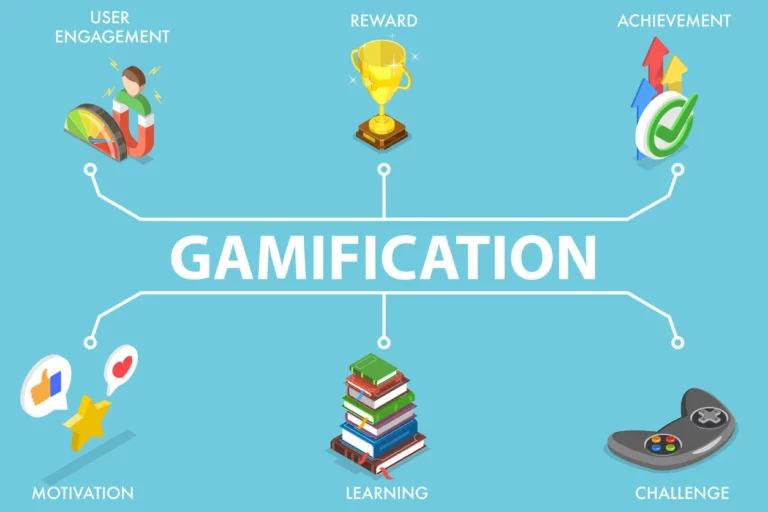3 Ways Games Can Improve Your Child’s Learning Ability
3 Ways Games Can Improve Your Child’s Learning Ability
Table of Contents
ToggleWhat is Gamification?
Gamification is the incorporation of game design elements and gameplay ideas into non-game environments. It could also be thought of as a set of steps and actions designed to solve problems by using the features of game components.
In simple terms, e-learning « makes the hard stuff more fun, » which motivates students and makes them more interested in the subject matter. It is the application of game aspects to non-gaming contexts.
The fact that gamification is not a new concept is intriguing. Even though the phrase might be newer, the idea of games has been around in many forms since the beginning of civilization.
Games have been used to teach, entertain, and engage people for thousands of years. For example, standard game components include points, badges, and leaderboards.
Even though traditional game elements have been around for a long time, they are showing up more and more outside of games, like on websites, in digital marketing, in workplace apps, and even in virtual to-do lists and productivity tools for adults.
Why are games important in learning?
It offers a number of benefits over conventional learning methods, including:
- Increasing degrees of learner motivation
- Improving retention of information
- Improve learner engagement via social mechanisms such as badges, points, and leaderboards.
In our contemporary society, technology is a natural motivator for education and curriculum improvement. Teachers in the 21st century are using more and more cutting-edge digital tools and methods to help their students do better in school.
Gamification is one of these methods that teachers all over the world are using more and more. Gamified parts of a lesson could make students more interested and help them work together, which would make learning go more smoothly.
The use of games in education could be helpful because they teach skills like problem-solving, critical thinking, social awareness, teamwork, and collaboration that can be used for the rest of a person’s life. Games also encourage people, raise their interest in certain courses, decrease the dropout rate among students, improve their grades, and improve their cognitive ability.
SuzyApp has identified three major ways in which gamification can improve your child’s learning methodology:
Games can increase motivation and engagement in the classroom.
Even in a classroom setting, game features like getting feedback quickly and earning badges for completing tasks will have a big impact on how motivated students are to play these games.
Also, the social aspect of gamified learning, where students play together, has a number of benefits for brain function. In fact, social and intellectual interaction boosts neurotransmission, brain plasticity, and rewiring and reduces brain inflammation and the bad effects of oxidative stress.
It helps to wire your brain
Gamification changes the reward and pleasure centers of the brain and enhances learning. It is well known that when a player wins a game or gets positive feedback, the brain’s pleasure circuits may be activated by the release of dopamine. It is thought that educational games that have parts about getting past problems or reaching a goal will have the same effect. When learning is fun, students are more likely to remember what they learned or be able to solve problems that would have been hard to solve before.
The way games affect the pleasure center also has important effects on learning in general. It has been seen that dopaminergic regulation of the midbrain, which stimulates the hippocampus. This is the main part of the brain involved in learning and memory, making it easier for new information to be stored in long-term memory.
Dopamine also helps control neuronal plasticity in the hippocampus, which is a fundamental brain process that helps us learn new skills and information. Activating brain circuits by playing video games has also been shown to help the hippocampus remember things better.
Games make learning enjoyable and engaging
The gamification of learning can help you make material that is interesting, educational, and fun, no matter who your audience is or what your topic is. Rather is not meant to turn work into a game, but it does take advantage of the psychological factors that make people want to take part.
We’ve all had the desire to compete, do better than others, and even beat ourselves. The benefits may be very rewarding and highly motivating. One of the best things about gamification is that it makes learning fun and useful, mostly because of how it makes people interact. Role-playing and competition add an element of immersion, which, if done well, could make learning fun.
SuzyApp helps you personalize gamified learning for your child
SuzyApp is based on the concept of using gamified apps to enhance the learning of children, while allowing parents to be stress-free about their children’s screen time. Developed around the concept of delayed gratification, which in itself has multiple benefits.
SuzyApp sequences educational apps before recreational apps, making your child’s screen time healthier. It’s based on the use of several gamified e-learning applications, such as Duolingo, Khan Academy, and many more, to make learning through screen time much more fun. When games can help your child’s growth and development to such an extent, what are you waiting for?
To learn more about how SuzyApp does this, check out our website.



Un Commentaire